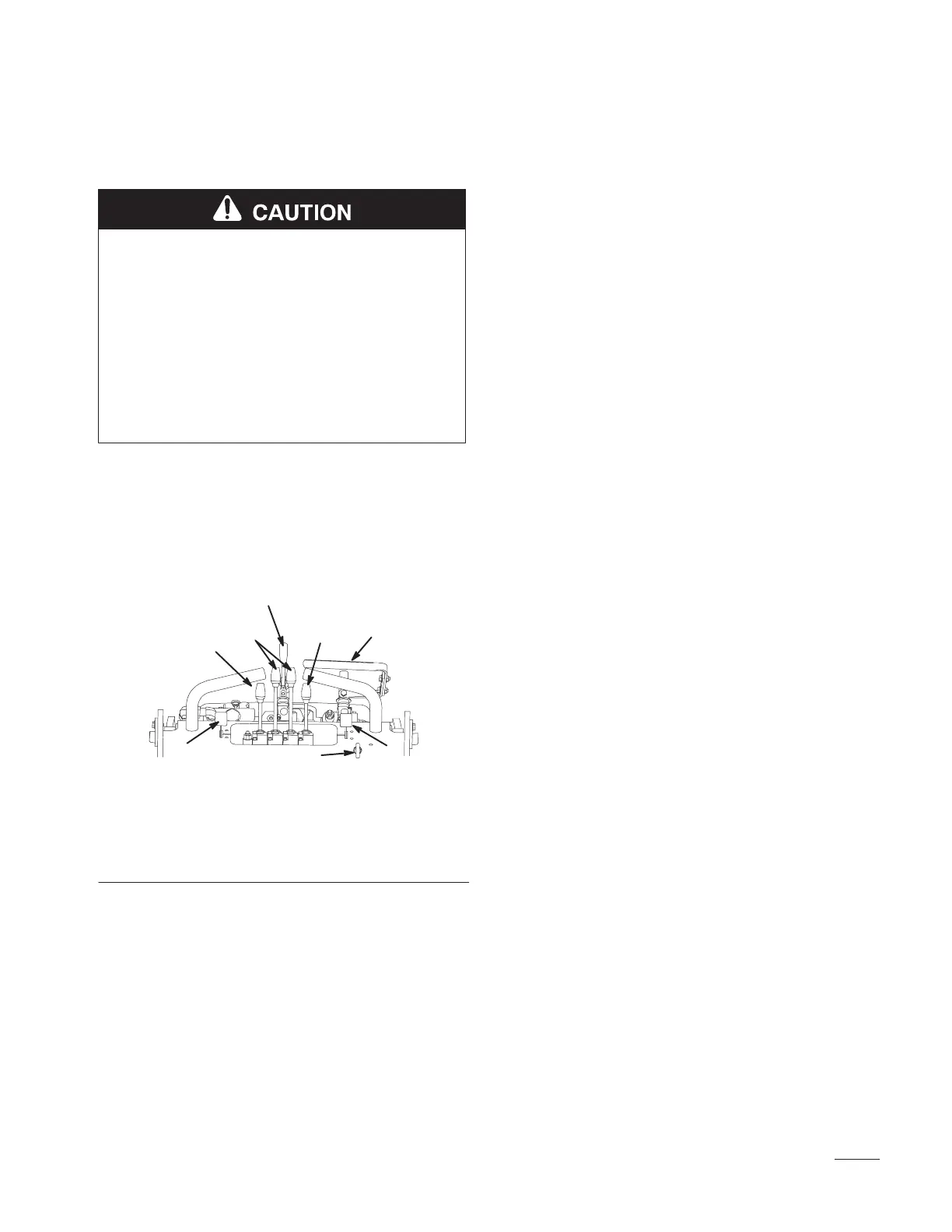17
Operation
POTENTIAL HAZARD
• Operator could fall off platform.
WHAT CAN HAPPEN
• Operator could be seriously injured.
HOW TO AVOID THE HAZARD
• Do not move any of the control levers
unless standing with both feet on the
platform and hands holding the hand grips.
Controls
Become familiar with all the controls (Fig. 8) before
you start the engine and operate the traction unit.
m–4388
1
2
3
5
4
7
6
8
Figure 8
1. Traction control levers
2. Attachment tilt lever
3. Loader arm lever
4. Auxiliary hydraulics lever
5. Pump selector lever
6. Throttle lever
7. Choke lever
8. Key switch
Key Switch
The key switch, used to start and stop the engine, has
three positions: off, run, and start.
To start the engine, rotate the key to the start position.
Release the key when engine starts and it will move
automatically to the run position.
To stop the engine, rotate the key to the off position.
Throttle Lever
Move the control forward to increase the engine
speed and rearward to decrease speed.
Choke Lever
Before starting a cold engine, move the choke lever
fully forward. After the engine starts, regulate the
choke to keep the engine running smoothly. As soon
as possible, move the choke lever rearward as far as
possible. A warm engine requires little or no choking.
Traction Control Levers
To move forward, move the traction control levers
forward. To move rearward, move the traction control
levers rearward.
To go straight, move both traction control levers
equally.
To turn, move the lever located on the side you want
to turn back toward the neutral position while keeping
the other lever engaged.
The farther you move the traction control levers in
either direction, the faster the traction unit will move
in that direction.
To slow or stop, move the traction control levers to
neutral.
Attachment Tilt Lever
To tilt the attachment forward, slowly push the
attachment tilt lever forward.
To tilt the attachment rearward, slowly pull the
attachment tilt lever rearward.

